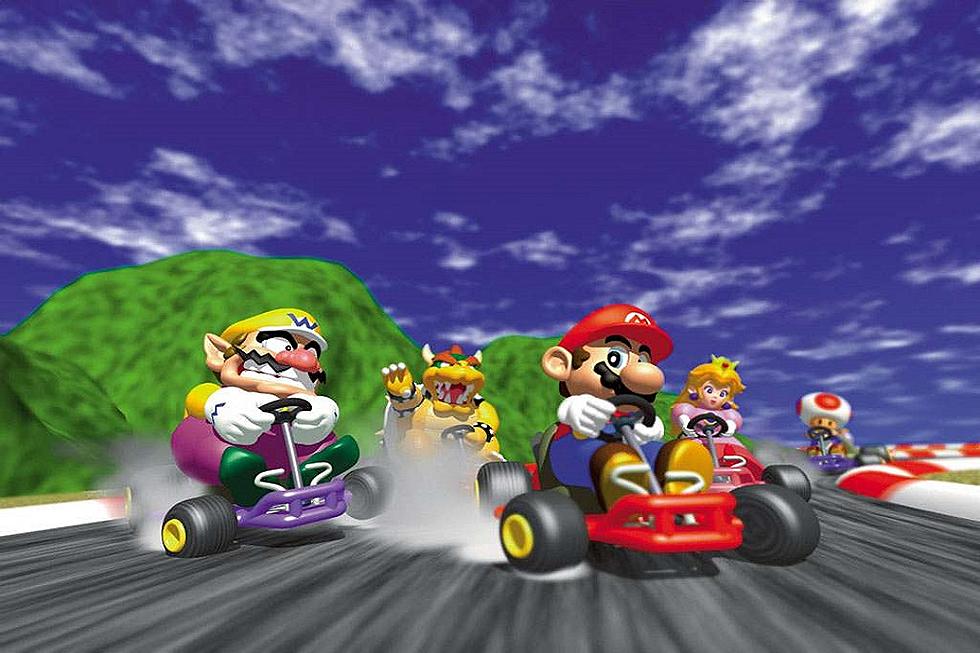
One Man, Seven Assassins: Celebrating Killer7
When we talk about weird game design, games that go so far beyond the norm of content or mechanics that they defy normal conventions of player expectation, it’s hard not to think about Suda51. Goichi Suda has made a famous living out of eccentric game design and there is perhaps no better example of that Killer7. Killer7 is an action adventure game, an on-rails shooter, partial horror, a puzzler and one of the most bizarre neo-noir stories in a video game. With so much going on, it divided critics and players down the middle on whether it was actually good. However, this polarized reaction created a cult following for the game and made Suda51 a popular name in the gaming industry. Today we celebrate the initial release of Killer7.
Killer7's development began in 2002, as a part of the “Capcom Five”: a series of games developed in a deal with Nintendo that were meant to be exclusive to the Nintendo Gamecube. Capcom executives felt the gaming industry had become stagnant and was in need of new intellectual properties to breathe new life into the scene. Suda51 was more than up to the task. He devised the story and visuals early with Shinji Mikami, focusing on these elements well before the actual mechanics of the game. In a 2007 interview with Gamasutra, Suda51 noted that the goal from the beginning was to create something that not only competed with other video games, but stood on its own as a form of art which could be compared to other media.
To achieve this goal, Suda51 made a slew of conscious decisions in both design and gameplay. He drew his main inspiration from film noir, as well as Japanese yakuza films, and sought to combine elements of Western and Eastern animation styles in an original cel-shaded style. Gameplay was deconstructed as well. Despite mostly being an on-rails shooter, Killer7 was designed to present the player with intuitive controls that would make them think as they played. This would come in the form of unique environmental puzzles and even providing unique strategies and weak points for defeating the game’s varied enemies.
Killer7 takes place in an alternate world where nations have shed nuclear arms and attempted to embrace international peace. However, a terrorist organization known as Heaven Smile disrupts peaceful negotiations with a virus that drives an affected person to kill those around them. These infected are armed with bomb organs that cause them to explode at will. Meanwhile, Japan and the US find themselves at political odds and seek to sever ties with each other, creating the central conflict in the game. In the midst of this, players take on the control of Harman Smith, a wheelchair bound man who can transform into seven personas. Harman and his personas are assassins employed by the government to infiltrate Heaven Smile-infested compounds and eliminate high-value targets.
Gameplay has the player infiltrating compounds and navigating their way to the target, killing Smiles that attack them along the way. Often times when entering a new area, the player will hear creepy laughter that signals the presence of a Smile. Players must then enter a first person shooting mode and kill the approaching Smiles before they latch onto the character and explode. Harman accesses his personas throughout missions, each of which has different weapons, specialties and skills. Players are not only tasked with choosing the right persona for combat situations, but also environmental puzzles, some of which can only be solved by a specific persona. Choosing the right persona for the right scenario is paramount to getting the most out of the game and can even mean the difference between living and dying. All of this combined with a slick progression system made for a game that challenged players on both a reflexive and intellectual level.
Killer7 was divisive to say the least. It chases after a great number of ideals and seems to combine them in one amalgam of a game. The eccentricity of its design is its greatest strength, but also its weakness. Not everyone could handle its absurdity, nor did everyone enjoy its bizarre controls and mechanics, but those that did formed a cult following of the game. It was with Killer7 that Suda51 became well-known and it would be the springboard from which he was able to continue on to develop other stylized titles like No More Heroes. It may not be the best game ever created by any stretch of the imagination, but in terms to mechanical and artistic design, Killer7 is certainly one of the most unique.
More From Arcade Sushi

![It’s a Monster Hunter World, We’re Just Living In It [Preview]](http://townsquare.media/site/550/files/2017/06/monster-hunter-world.jpg?w=980&q=75)
![Marvel vs Capcom Infinite Just Got a Whole Lot Easier to Enjoy [Preview]](http://townsquare.media/site/550/files/2017/06/mvcinfinite.jpg?w=980&q=75)




![The Nintendo Switch’s Initial Library Preaches Quality over Quantity [Preview]](http://townsquare.media/site/550/files/2017/01/switch-preview-4.jpg?w=980&q=75)

